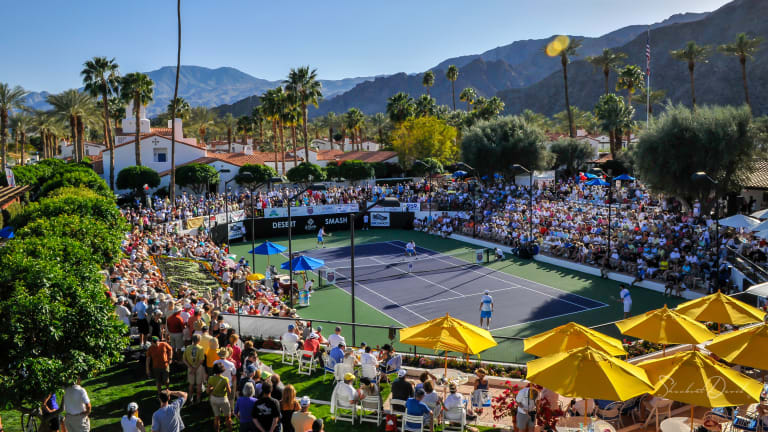Tennis has been transformed over the last five decades by TV, money, technology, equipment, fashion and politics. But through all of that, the players have remained at the heart of the game. As part of our golden anniversary celebration of the Open era, Tennis.com presents its list of 50 best players—the Top 25 men and the Top 25 women—of the last 50 years. You'll be able to view the entire list in the March/April issue of TENNIS Magazine.
(Note: Only singles results were considered; any player who won a major title during the Open era had his or her entire career evaluated; all statistics are through the 2018 Australian Open.)
Years played: 2001—
*Titles: 75
Major titles: 16*
What did Rafael Nadal’s uncle and coach, Toni, tell him before the start of the fifth set of his legendary 2008 Wimbledon final against Roger Federer? Exactly what he had been telling his nephew since he was four years old.
“I told him to battle to the end and endure,” Toni said.
That word, “endure,” was a mantra for the Spartan, stoical Toni. In his eyes, every tennis player faces one simple decision: “The choice is between enduring and giving up,” he says.
Toni never made that choice an easy one for his nephew. He demanded more from him than his other students, made him pick up the balls and stay late to sweep the courts, and never allowed him to savor any triumph for long. Young Rafa chose to endure Toni’s teaching sessions, and it would be his choice to do the same as a pro that would define his career. Nadal even came up with his own, more extreme word for what tennis required: to play the sport was, in his eyes, to “suffer.” He could take the punishment; more importantly, he would learn to dish it out, too.
When Nadal began playing pro events in his mid-teens, he had what he would cheerfully remember as the worst serve on tour. His backhand wasn’t a thing of beauty, either. But he had a powerful left-handed forehand, and, more important, a powerfully intense will to win—Nadal played as if he were in a competitive trance. When, as an amped-up 18-year-old, he beat recent No. 1 Andy Roddick in the 2004 Davis Cup final, in front of 27,000 of his countrymen, Nadal showed that he was ready for any stage and any opponent.
That included the dominant player of his day, Roger Federer. The following spring, Nadal announced his presence to the world when he jumped out to a two-set lead over Federer in the Miami final, before losing in five. Who was this jumping, fist-pumping, bicep-bearing kid in the pirate pants and the sleeveless shirt to challenge seemingly unchallengeable Federer? Nadal, it turned out, wasn’t just going to challenge Federer; he was going to beat him—23 times, to be exact.
Nadal beat Federer in the semifinals at Roland Garros that year, and two days later, on his 19th birthday, won his first French Open. It was the beginning of the longest and most productive relationship between a tournament and a player in Grand Slam history. Nadal would win 10 titles at Roland Garros in 13 years; his 97.5 winning percentage (79-2) in Paris is the highest of any player at any major in the Open era.
